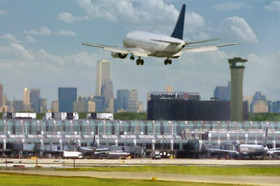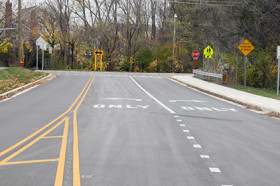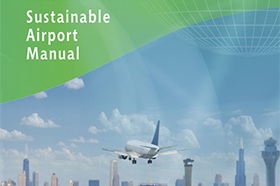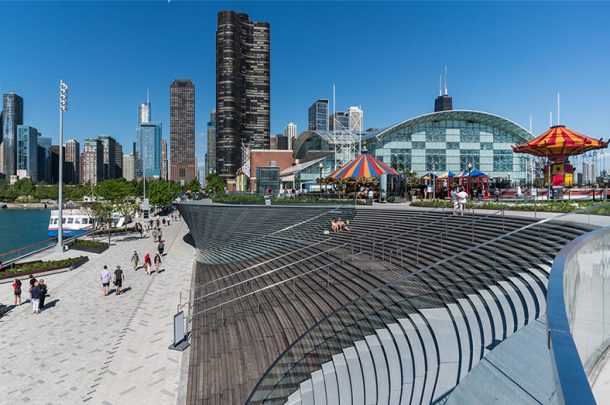
Primera continues to promote efforts to make us a greener company, in not only the services we provide but also the way we conduct and maintain our business. This is the third analysis since 2009 conducted to determine Primera’s carbon footprint, and give us an idea of where we currently stand. As in previous years, we estimated that the main sources of our carbon emissions from the operation of our business would be due to the following: office electricity use, paper use, water use, and employee commutes. These sources were chosen because they are the main activities and consumables that we have direct control over. Space heating, for example, is something we neither have direct control over nor are our offices set up to measure it. It should be noted that these results are based on our consumption in 2015 for all three of Primera’s offices.
Results
Based on our utility bills, restroom usage estimates, and office paper orders which include all printers, copiers, and plotters, we estimated the consumption of electricity, water, and paper. To estimate the carbon emissions from our commutes, we required input from the employees which came in the form of a survey. Based on the collection of this data, we found that our annual carbon emissions by source are as follows:

The findings were similar to what was reported in previous years. By far the largest contribution to our carbon footprint is due to our daily commute and the choice of transportation chosen. Electricity and paper usage also contribute but water use has a miniscule impact. Primera’s total carbon emissions for 2015 were 1,050 tons CO2 per year. This translates to about 4.88 tons of CO2 per year per employee.
This is the first year of carbon emission results for our Munster office and the data will only serve as a benchmark for now. Lisle and Munster have a comparatively larger carbon footprint than Chicago but this is due to the impact that public transportation access has on these locations: Chicago is centrally located near multiple public transportation modes whereas Lisle and Munster are primarily accessed by personal vehicles due to the lack of public transport options. It should be noted that the Munster results are skewed relatively high on a per employee basis because of the small sample size (2 employees).
What Does it All Mean
As we attempted to put this data into some sort of reportable format, we quickly realized how difficult it was to start making comparisons or even start showing trends. Even with Chicago having completed three reporting periods, the trends are not easy to spot and the obvious realization becomes that the Chicago office of 2009 is not the Chicago office of 2015. This is most certainly true of Lisle that went from an office with a few part-timers in 2009 to 48 employees in 2012 to 121 as of the end of 2015. The Chicago office in that period expanded and remodeled which seems to have resulted in a significant increase in electricity usage, and our Munster office wasn’t even around. And just to make things fun, we decided to add the field employee contribution to the carbon footprint for Primera this year. So with that said, maybe this is just another benchmarking year OR maybe we need to look at our carbon foot print on a per capita (per employee) basis. Below is the historical data for Primera and each office showing the annual carbon emissions per employee for each of the reporting periods for which data was collected:

Using a per employee carbon emission rate helps eliminate some of the variability due to the number of employees at any given office. If we look at Primera’s overall historical carbon emissions by employee, we see that our annual per employee emission rate was 3.3 to 3.4 tons CO2 for the previous reporting periods. For 2015, that emission rate jumped to nearly 4.9 tons CO2 but that was due to the addition of Munster and the Field employees in this reporting period, so this may be the new normal. Comparatively, we continue to see that the impact of our daily commutes on our carbon footprint tends to be the biggest carbon emission source but also the one we have most control over. The Chicago carbon footprint is lower than the other offices, as expected, due to the availability of mass transit options.
It’s All About the Commute
Other interesting findings regarding Primera employee commutes:
- The total weekly miles travelled by Primera is 39,448 miles. On an annual basis that is a company total of approximately 2 million miles or 80 trips around the equator.
- The average weekly commute per person was 168, 182, 285, and 264 miles for Chicago, Lisle, Munster, and Field, respectively.
- In Chicago, the primary transportation mode is Metra with 52% of employees using it as their primary mode. In Lisle and Munster, personal vehicle usage is the primary mode of transportation with fossil-fueled vehicles making up 95% and 100%, respectively. Only 6% of Chicago commuters rely on personal fossil-fueled vehicles by comparison.
- The portion of carbon emissions due to commuting out of the total carbon emissions for the company is 78%.
We were surprised to discover how large an impact employee commutes have on the carbon footprint of the company when we first did this exercise in 2009 (approximately two-thirds of the total carbon emissions). This year only emphasizes the importance of alternative and public transportation in reducing our carbon emissions given our growth in Lisle and Munster. Primera already provides mass transit subsidies to employees and the opportunity to buy transit tickets on a pre-tax basis. We encourage employees to be mindful of their commuting habits. Even at the Lisle office which is not well-served by public transit, we hope that alternate methods, such as carpooling, can be attempted where possible.
Random Factoids
Other interesting facts for 2015:
- The total area of office paper used by Primera is enough to cover an area of the Loop bounded by Wacker Drive on the east side of our building, between Adams and Washington and stretching east to almost LaSalle in a single 32.6 acre sheet of paper. For those in Lisle, that would be a single sheet of paper covering all the properties between I-88 and Warrenville Rd., east to I-355, and up to and including the Lisle office to the West. For Munster, that would be a sheet of paper as wide as a football field (including end zones) laid out from Calumet Avenue in front of the Munster office all the way to the Illinois state line (about 0.8 miles).
- Primera as a whole used 382 megawatt-hours (MWh) of electricity in 2015. For reference, according to environmental disclosures, both Exelon (Chicago, Lisle) and NIPSCO (Munster) emit a little over 1,000 lb CO2 per MWh of electricity generated.
- In 2012, 41% of the overall company commute miles were by gasoline-powered vehicles. This increased to 68% in 2015. Understandable given the growth in the Lisle and Munster offices (and the addition of Field employees). Gasoline-powered vehicles account for 68% of Primera’s carbon emissions due to commuting.
- Primera used enough electricity to power 33 average single-family US homes (for comparison, this could power 83 homes in the UK – just sayin’).
- On a weekly basis, Primerans commute 369 miles on average by foot or cycling. Kudos to those who use these carbon-free transportation modes, including those out in Lisle.








 O’Hare Airport Concessions Take Off
O’Hare Airport Concessions Take Off 







